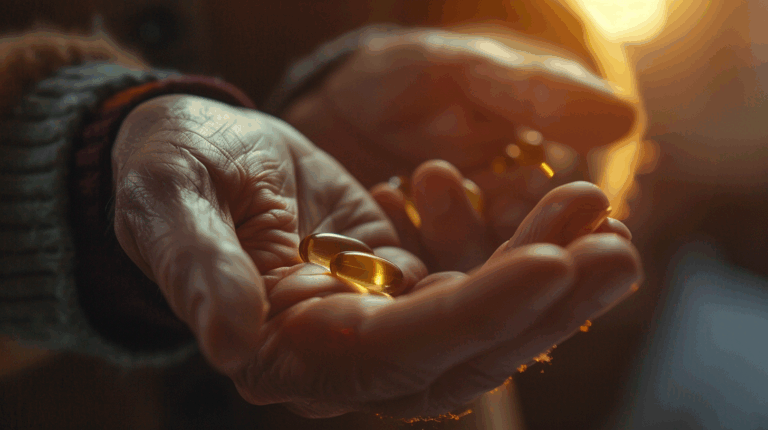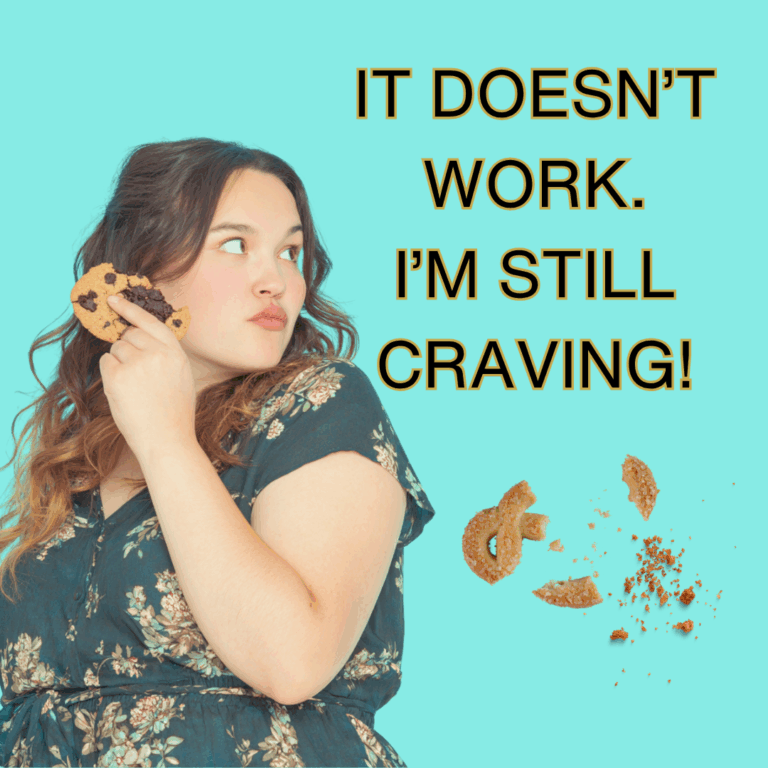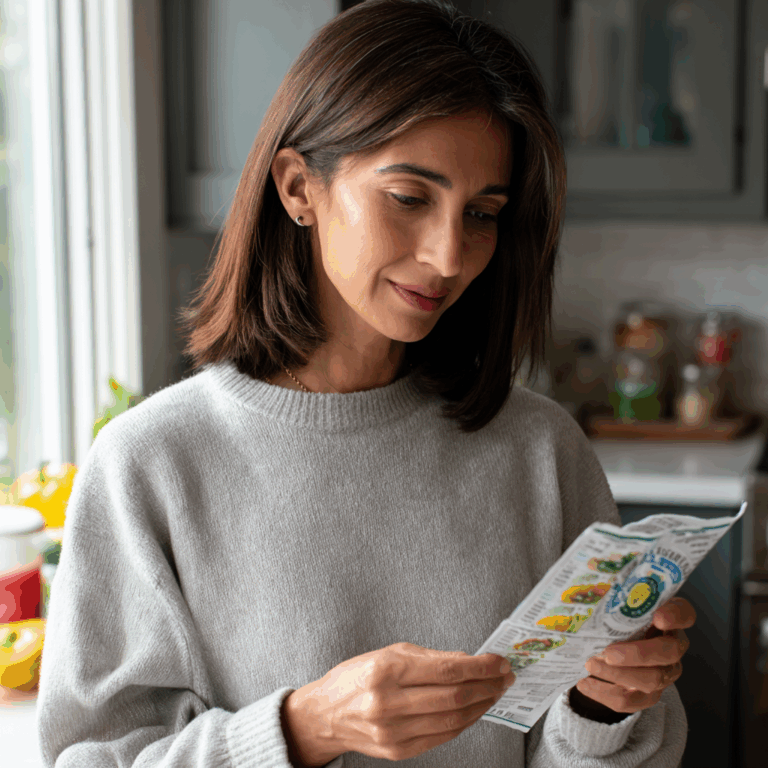By Mike, The SugarFreeMan
Founder of SugarDetox.com and the 30-Day Sugar Freedom Challenge
People think it’s warm all the time in Southern California. (My northerner friends, yes – 40s and 50s at night are NOT warm to me.) Those two months of perfect weather? I chase them like a sacred thing: windows open, fresh air on your face, sleep that actually repairs you.
Small comforts matter. They change how you feel, and how you face the hard stuff.
If you’ve ever tried to quit sugar, you already know the truth: those first few days are brutal. They’re also the most important. The fastest way to sugar freedom isn’t a trick you buy, a pill, or a special food – it’s a change inside your head that lets the rest follow.

This article was review by Dr. Camela McGrath, MD, FACOG. Find more about her here
Featured snippet: The fastest route to sugar freedom is acceptance – recognizing sugar dependence for what it is, choosing a clear plan (abstinence + structure), and using compassionate strategies to replace old coping habits. Practical steps – sleep, movement, label-reading, and a 30-day plan – create durable change.
Why “fastest” isn’t the same as “easy”
When people ask me, “Mike, what’s the fastest way?” they usually mean, “How soon will I feel better?” That’s a fair question. But fast and easy are often opposites. The fastest path requires a short period of brave discomfort – honest acceptance, ruthless clarity, and simple rules you actually follow.
“Acceptance is not giving up. It’s seeing clearly so you can stop bargaining with a substance that’s been running your decisions.”
Step 1 – Acceptance: the surprising shortcut
Acceptance is the seatbelt. If you don’t buckle up, you’ll keep sliding back into the same excuses.
What acceptance actually looks like
- Admitting sugar is working like a drug for you – emotionally comforting, habit-forming, sometimes physically addictive.
- Seeing that your body and brain react differently than someone else’s – that’s biology, not failure.
- Recognizing that to heal, you’ll need to ask for help and change your environment for a bit.
Actionable tip: Stand in front of a mirror and say aloud: “I accept that sugar controls me more than I want. I’m choosing to change.” It sounds small. It’s not.
Step 2 – A blunt plan: clear boundaries beat vague goals
Vague goals – “eat less sugar” – allow excuses. A blunt plan says: no added sugars, no refined flour, and minimal snacking for 30 days. That clarity speeds recovery because your brain stops negotiating.
My recommended 30-day framework (what to actually do)

- Days 1–7: Abstain from added sugar and refined flour. This is the detox window. Prepare meals, clear the pantry, pick two go-to lunches you can repeat.
- Days 8–21: Build habits for cravings. Replace sugar with protein + fiber meals, aim for 8 hours of sleep, and start a nightly wind-down routine.
- Days 22–30: Practice social and real-world tests. Try a party or dinner without sugar cheats and notice what happens emotionally and physically.
Quick checklist to get started tonight:
- Throw out or box up obvious triggers (cookies, candy, convenience sweets).
- Buy 3 protein-rich dinners you can make in 30 minutes.
- Set a sleep goal and a wind-down alarm-no screens 30 minutes before bed.
Actionable tip: Put a sticky note on the fridge: “Not today. 30 days.” That tiny cue prevents 100 decisions.
If you’re serious about this, our 30-Day Sugar Detox Challenge will walk you through every step. You don’t have to guess anymore.
Step 3 – Rewire the why: feelings fuel relapse
People use sugar for a reason: energy, comfort, reward. You can’t out-willpower a lifetime of emotional training. You work with it.
Three practical swaps that actually help
- Swap sweetness for structure: Eat at regular times – protein + fat + greens – so blood sugar stabilizes.
- Swap emotional eating for a pause: When you want sugar, wait 10 minutes. Breathe. Do 3 deep breaths. Name the feeling (bored, tired, stressed).
- Swap isolation for connection: Tell one person you trust what you’re doing – accountability beats shame.
Science check: The cravings curve is real – acute cravings often peak around day 10–15. That’s normal and temporary. If you’re worried about physical symptoms, check trusted sources like the CDC or NIH for context.
Actionable tip: Write a short “why” note: 1–2 lines about what you want (e.g., “I want steady energy and to stop hiding behind food”). Read it when cravings hit.
Step 4 – Practical tools: what actually makes the first 30 days survivable
Here’s where the day-to-day wins happen. These aren’t sexy. They work.
Sleep
Why it matters: Poor sleep spikes hunger hormones and makes sugar harder to resist. Try to create a cool, dark bedroom and aim for consistent sleep times.
Actionable tip: Open a window if you can – fresh air is underrated.
Movement
Not extreme. Walk, move, stand. Even a 10-minute walk after meals helps blood sugar and mood.
Actionable tip: Schedule three 10-minute walks per day and treat them like non-negotiable meetings.
Label literacy
Learn where sugar hides: breads, sauces, flavoured yogurts. If a food has more than 5g sugar per serving and you didn’t add it, read it twice.
Actionable tip: Keep a phone photo of your go-to safe meals so you’re not guessing in the grocery aisle.
Replacement foods that satisfy
- Plain Greek yogurt with nuts and cinnamon
- Hard-boiled eggs + avocado
- Veggies + hummus and a small portion of olives
Actionable tip: Prep two breakfasts and two lunches on Sunday – repetition is freedom.
Step 5 – Social life, parties, and being “that person”
This is where folks freeze. “I don’t want to be difficult at dinner.” I hear you. Here’s how to stay sane and social without sugar sabotaging you.

Short scripts you can use
- “I’m doing a short program – I’ll pass on dessert tonight.”
- “I feel better when I skip added sugar – I’ll have fruit or coffee.”
- “I’ll bring a simple dish I can eat – want the recipe?”
Actionable tip: Choose one social event this month to practice the script. See how people react – usually more supportive than you expect.
Troubleshooting: when cravings, slips, or shame show up
Slip-ups happen. That doesn’t mean failure. It means you’re human. The real work is what you do next.
When you slip
- Don’t catastrophize. One moment does not erase your progress.
- Write down what led to it (time of day, mood, people). That data is gold.
- Reset immediately – don’t “start tomorrow.” Start with the next meal.
Actionable tip: Keep a tiny notebook to log slips and triggers for the first 30 days.
Why a guided 30-day plan speeds the fastest route
We’re built for instructions. When you have someone who’s done this – who’s been through the cravings, the sleep fog, the social awkwardness – you can skip mistakes and stay on track.
Personal note: I’ve coached thousands through this. The people who get the fastest wins are the ones who commit to a short, strict window and accept outside help. You don’t have to do every step perfectly – but you do need a plan you stick to.
If you’re serious about this, our 30-Day Sugar Detox Challenge will walk you through every step. You don’t have to guess anymore.
Final checklist – 10 things to do right now
- Write your one-line “why.”
- Clear one sugary trigger from your kitchen.
- Prep two breakfasts for the week.
- Plan three 10-minute walks this week.
- Set a bedtime wind-down alarm (30 minutes before bed).
- Tell one supportive person what you’re doing.
- Download or print a 30-day calendar and mark Day 1.
- Pick one scripted line for parties.
- Buy a protein-rich pantry staple (eggs, canned wild salmon, nuts).
- Read one short article from a trusted source (CDC/NIH/Harvard).
Internal links and further reading
- Three Free Steps to Start Your Sugar Detox
- Sugar Addiction and Kids: Put Your Oxygen Mask On First
- 30-Day Sugar Detox Challenge
About the Author
Mike Collins, known as “The SugarFreeMan,” has been sugar-free for over 35 years and is the founder of SugarDetox.com. He has helped tens of thousands of people break free from sugar addiction through his evidence-based approach combining nutritional science with practical behavior change strategies.
Medical Disclaimer
This article is for educational purposes only and is not intended to replace professional medical advice. Always consult with a healthcare provider before making significant dietary changes, especially if you have underlying health conditions.






